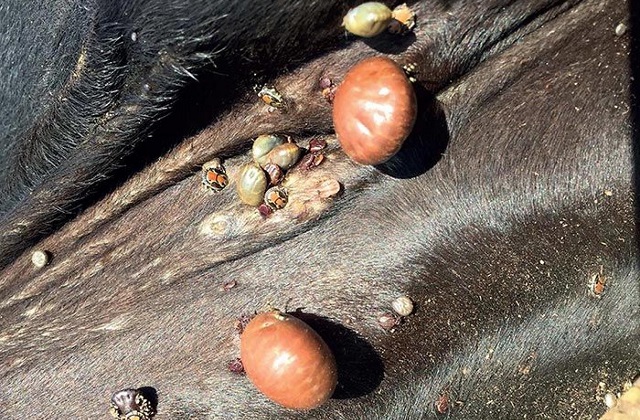
Kampala, Uganda | THE INDEPENDENT | A vaccine against the tick-borne diseases developed by Ugandan scientists is due to be commercially usable by the end of this year.
The Ministry of Agriculture, Animal Industry and Fisheries, MAAIF, Frank Kagyigyi Tumwebaze says the program is going on as scheduled and the vaccine is going through the required clinical trials.
He was launching a committee on the effectiveness of agrochemicals and animal health products in Uganda. The committee is aimed at finding out why agro-inputs like anti-tick chemicals, crop pesticides and fertilizers are not giving the outcomes expected.
The vaccine project commenced late last year by scientists led by the National Livestock Resources Research Institute (NaLIRRI).
The idea was introduced following years of trying to eradicate especially the East Coast fever, the most lethal of the tick-borne diseases from the country.
In February 2021, then State Minister for Finance David Bahati requested a supplementary of 2.27 Billion Shillings to cater for the Anti-tick Vaccine development Initiative by State House.
MPs questioned why the project was being handled by the President’s office and what competence the presidency had in overseeing such a science-based innovation. The money was later approved.
The lead researcher in the vaccine project, Dr Frederick Kabi from NaLIRRI, said the problem with the tick especially that which transmits the East Coast fever in livestock is that it keeps mutating.
But he is sure that the vaccine would be rolled out by the end of this year, following the completion of regional location trials. Ticks are the single major cause of deaths and reduced productivity in livestock in Uganda and 80% of the countries around the world.
The East Coast fever is a cancer-like, tick-transmitted disease that kills cattle within three weeks of infection by building excess amounts of fluid in their lungs. The other tick-borne diseases include babesiosis, anaplasmosis and hidrocardia, all serious.
Scientists at the International Livestock Research Institute (ILRI) previously helped to develop and massively produce a vaccine for the disease, in partnership with the now Veterinary Research Centre and part of today’s Kenya Agricultural and Livestock Research Organization.
The science journal, Science Direct published that from 1997 to 2014, the vaccine prevented the untimely deaths of some 400,000 animals.
This vaccine uses an infection and-treatment method, where the livestock are given a combination of infectious strains of the parasite, and then the animals are administered with antibiotics.
By 2014, the mortality rate of the animals infected was reduced by up to 95%, but its distribution reach is still limited to a few areas in Uganda, Kenya and Tanzania.
Another initiative for a vaccine in Uganda is by the Institute for Game and Wildlife Research (IREC), the government and the University of Castile-La Mancha.
The trials of the vaccine in cattle, as well as training of personnel in Uganda to produce the drug, started in 2019, but this is still at its early stages.
“In Uganda, the cost of controlling tick-borne diseases in this African country accounts for about 80% of the total annual budget associated to curb diseases affecting cattle, so is a barrier to economic growth,” says IREC.
These diseases include, among others, the east coast fever, the direct and indirect loss resulting from tick-borne diseases that cost Uganda more than US$ 1.1 billion annually, according to the Science Direct publication.
The most common types of ticks in Uganda are Ixodidae (hard-bodied ticks) and Argasidae (soft-bodied ticks). Each of them contains different types of diseases, with the family Ixodidae transmitting as many as five diseases.
In Uganda, the most affected areas are those with warm and humid temperatures, meaning the central and western regions are more vulnerable to tick attacks, compared to say, Karamoja and most of northern Uganda.
Tumwebaze said with the growing resistance of ticks to acaricides, the development of an effective vaccine is currently necessary.
*****
URN
 The Independent Uganda: You get the Truth we Pay the Price
The Independent Uganda: You get the Truth we Pay the Price



